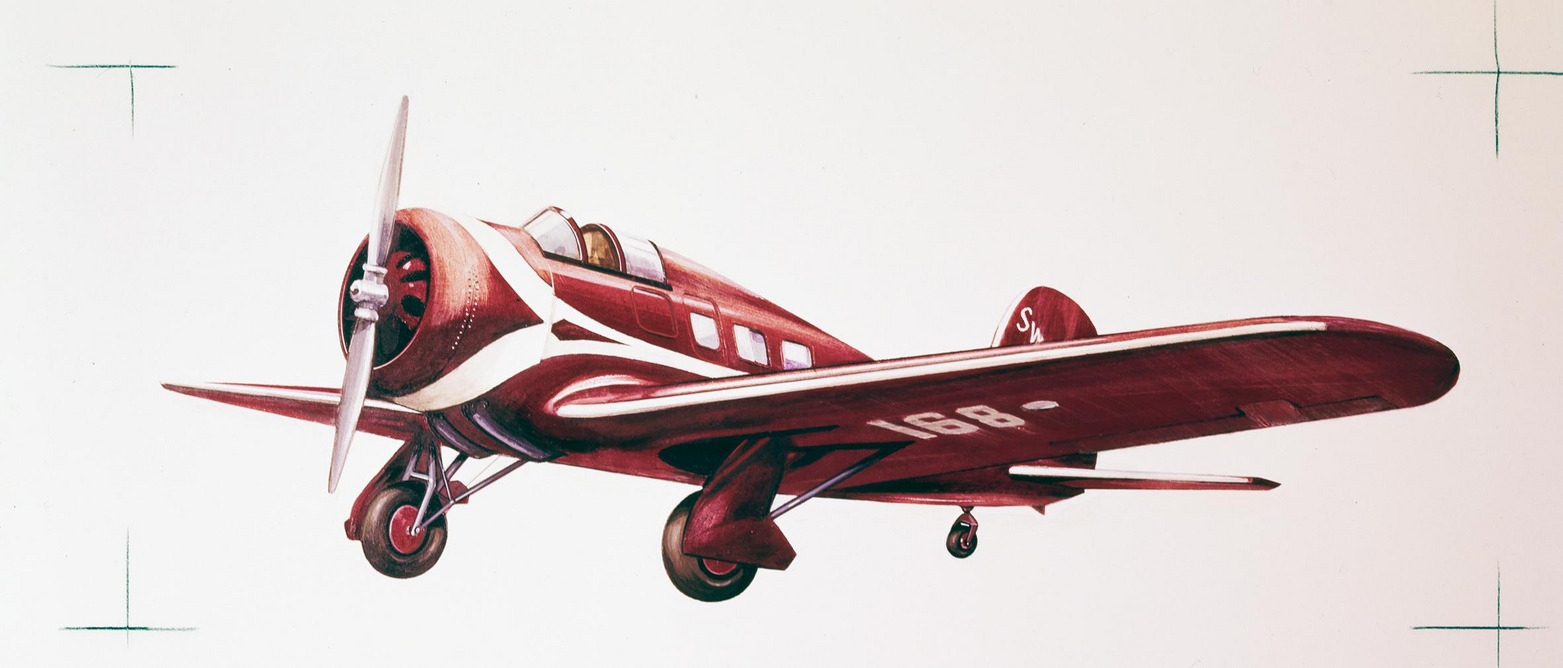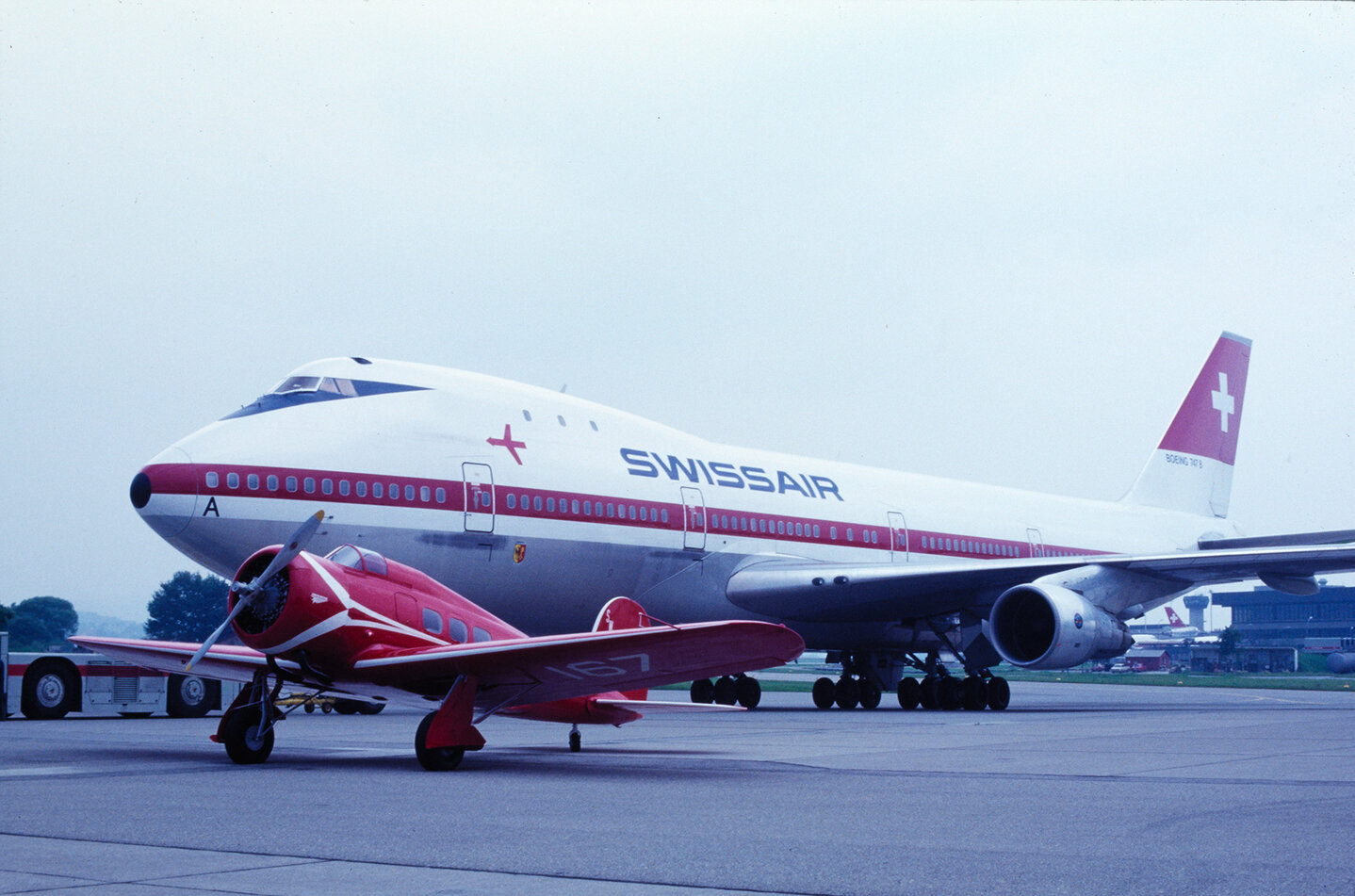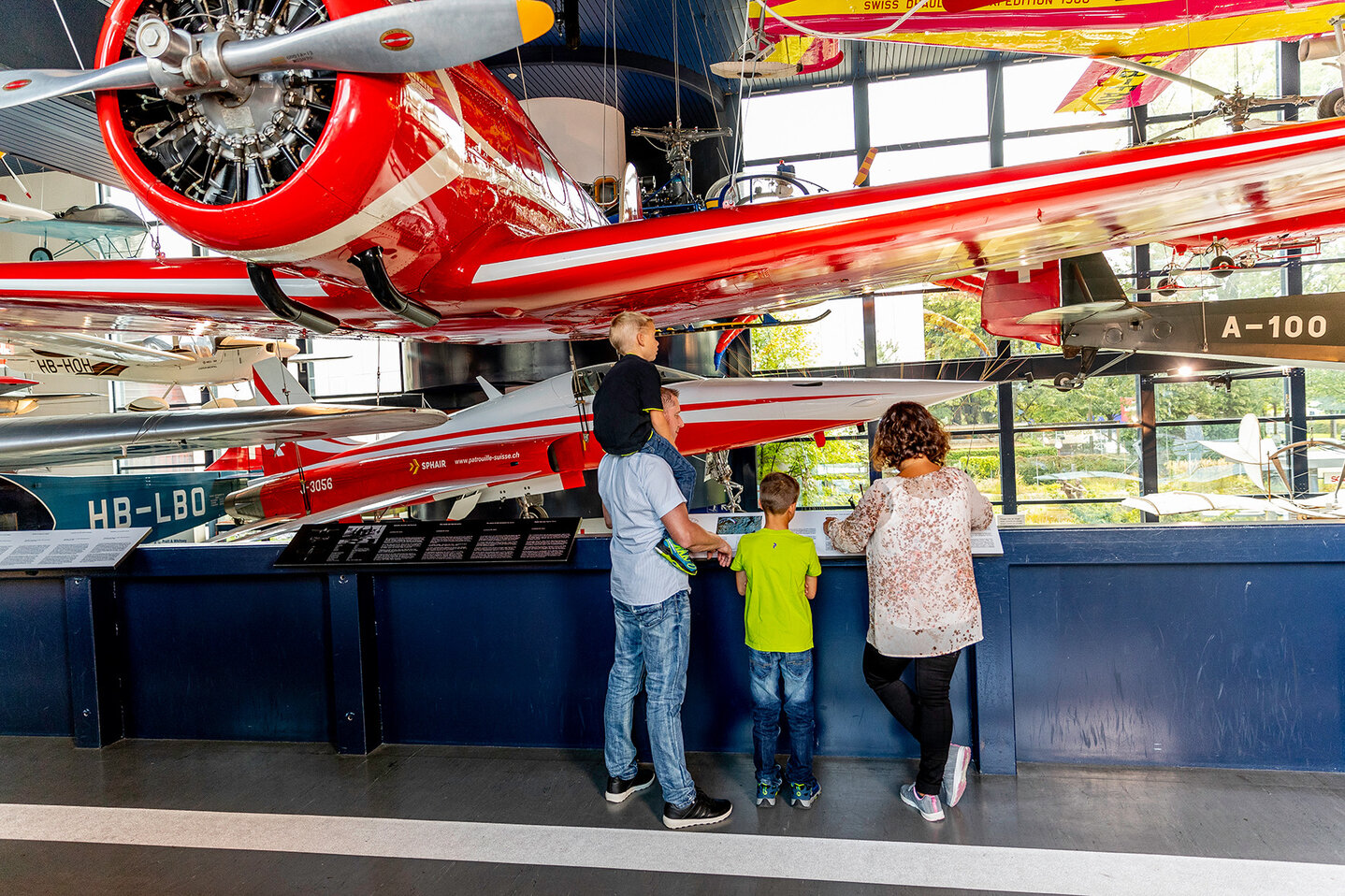
Author Simon Müller
The real selling point of the Orion was its speed of 290 km/h. This made it around 100 km/h faster than other aircraft that dominated the market. Compared to these, the Orion also looked more like a fighter plane than a passenger plane: the cockpit was mounted on the fuselage behind the engine and the landing gear could be retracted. The latter was an absolute novelty in aviation and massively improved the aerodynamics. However, there were limitations in terms of load capacity. The Orion could only carry six passengers. This was immediately the plane's biggest weakness.
Aircraft sets standards
Swissair was the first European airline to use these new high-speed aircraft - just one year after it was founded. It bought two aircraft, which were used on the express routes between Zurich, Munich and Vienna: Take-off at 9.10 a.m. from Zurich, landing at 10.10 a.m. Munich and later at 11.40 a.m. in Vienna. The Orion was a complete success and a trendsetter for European aviation. It quickly fulfilled this role. Only a few years after their acquisition, the two aircraft were already being replaced: The American Clark GA-43 high-speed aircraft had a similarly high cruising speed, but with 10 passenger seats, two and a half times the capacity. They were also equipped with a radio system.
Elaborate restoration
Of the 35 Orion aircraft produced, 34 had a fuselage made of spruce wood. Only one aircraft was made of light metal - the Orion 9C Special. This aircraft now hangs in Swissair's red livery in the Aerospace Hall. The first director of the Swiss Museum of Transport, Alfred Waldis, bought the privately owned aircraft in 1976 and brought it to Switzerland with the help of Swissair, McDonnel Douglas and Seabord World Airways. The Fokker team took over the restoration of the last surviving Orion aircraft. Over 10,000 working hours were invested in the restoration.
Transfer to the Museum of Transport
On August 4, 1978, the restored Orion was loaded in Zurich and transported to Lucerne. To do this, it had to be dismantled and then reassembled. The handover to the Museum of Transport took place on August 10. Today it hangs from the ceiling of the Museum of Transport and can be viewed from below, from the front and from above thanks to the passarelle.

